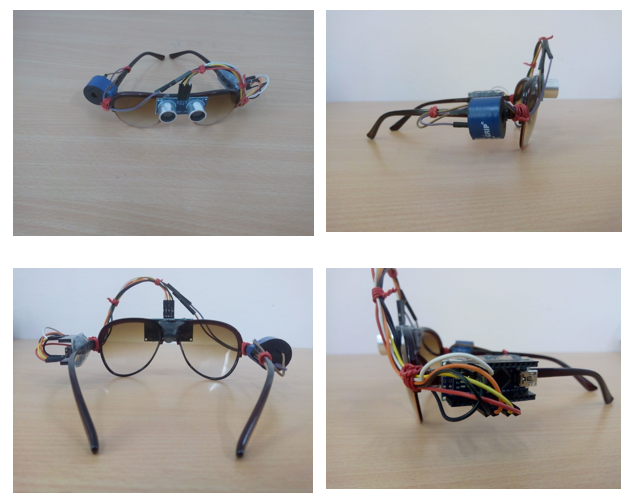Discover Advanced Assistive Devices for Individuals With Aesthetic Impairments
The landscape of assistive technology for people with aesthetic disabilities is advancing rapidly, presenting an array of ingenious devices that boost freedom and engagement. From wise glasses that flawlessly combine visual input with acoustic assistance to advanced navigation applications that redefine spatial understanding, these tools are improving possibilities.
Smart Glasses Innovations
Smart glasses represent a considerable innovation in assistive modern technology for people with visual disabilities. Furnished with sensing units and cameras, clever glasses can catch real-time aesthetic information, which is after that processed and shared to the customer via audio responses or haptic sensations.
In addition, developments in fabricated intelligence have actually further enhanced the abilities of smart glasses. Device understanding formulas can recognize faces, read text, and determine things, making them indispensable tools for day-to-day jobs. Customers can obtain acoustic cues that supply context regarding their atmosphere, promoting freedom and self-confidence.
Furthermore, the ergonomic design and lightweight nature of many smart glasses make them appropriate for long term usage, making certain comfort while boosting capability. As these tools proceed to progress, they hold the prospective to transform the means people with visual disabilities experience their lives, bridging the space in between availability and technology. The ongoing r & d in this field guarantee to increase the possibilities for clever glasses, making them a necessary component of modern assistive tools.
Navigating Application and Tools
Many navigating applications and tools have arised as vital resources for people with aesthetic disabilities, considerably improving their ability to traverse unknown settings. These technologies leverage general practitioner capability, audio signs, and real-time data to supply customers with specific navigating assistance.
One famous instance is the Aira app, which attaches customers to qualified representatives who can offer aesthetic descriptions of environments and navigating guidance via an online video feed. This solution enhances the user's spatial awareness and self-confidence while navigating. One more remarkable tool is Seeing Eye GPS, which provides voice-guided navigation and factors of interest, making it possible for customers to access important information regarding their environments.

As technology continues to advancement, the growth of much more sophisticated navigating tools assures to more equip individuals with visual disabilities, facilitating smooth mobility and combination into diverse atmospheres. Such developments contribute in promoting a more inclusive culture.
Braille Innovation Improvements
In the last few years, improvements in Braille innovation have significantly changed how people with aesthetic impairments accessibility information and involve with the globe around them. The growth of mobile Braille display screens has changed analysis by allowing customers to link wirelessly to computers, tablets, and mobile phones. These tools transform text right into Braille in real-time, making it possible for seamless interaction with digital web content.
Moreover, innovative Braille printers have emerged, enhancing the production of tactile products. Modern embossers are much faster and much more efficient, allowing for the quick development of Braille files and educational materials. This efficiency lowers the moment and price linked with creating Braille resources, making them a lot more available to organizations and institutions.
Furthermore, the combination of Braille with other modern technologies, such as fabricated knowledge and machine understanding, has actually opened brand-new avenues for individualized discovering experiences. Voice acknowledgment and synthesis modern technologies can complement Braille, offering an inclusive strategy to info circulation.
As the demand for comprehensive education and learning and work environment settings expands, these technical innovations play a vital role in equipping people with visual problems, ensuring they have equivalent accessibility to info and chances in various facets of life.
Wearable Tools for Self-reliance
A growing range of wearable tools is boosting self-reliance for individuals with aesthetic impairments, supplying ingenious options that enhance navigating and daily living. Braille displays and notetakers. These tools utilize sophisticated modern technologies to give real-time comments and assistance, promoting autonomy in various environments

Wearable technology likewise consists of smartwatches that can be set with accessibility functions, making it possible for customers to receive notices, track their places, or perhaps ask for help with the touch of a switch. Additionally, some gadgets include fabricated intelligence to assess the environment, offering audio summaries of nearby items or individuals.
Voice-Activated Assistive Solutions
Leveraging voice-activated assistive options has actually changed the landscape of assistance for people with visual disabilities, providing hands-free communication and go accessibility to a range of jobs. These technologies utilize natural language handling and artificial intelligence to enable customers to perform daily tasks through basic voice commands.

Furthermore, current innovations in voice recognition accuracy have enhanced the customer experience dramatically, fitting varied accents and speech patterns. This inclusivity guarantees that more people can gain from these innovations, promoting a higher feeling of autonomy.
Final Thought
Finally, the advancement of sophisticated assistive devices considerably improves the self-reliance and lifestyle for people with aesthetic impairments. Developments such as clever glasses, navigating applications, Braille innovation, wearable devices, and voice-activated solutions jointly foster a more comprehensive environment. These technologies equip individuals to navigate their environments with confidence and engage even more fully with the globe, eventually advertising my blog higher accessibility and level playing fields for individuals encountering aesthetic challenges.
The landscape of assistive modern technology for people with aesthetic impairments is progressing rapidly, offering an array of innovative tools that enhance freedom and engagement.Smart glasses stand for a considerable advancement in assistive technology for individuals with aesthetic problems. As these devices continue to advance, they hold the potential to reinvent the method people with aesthetic disabilities experience their everyday lives, bridging the gap between availability and modern technology.In recent years, innovations in Braille innovation have Get the facts considerably transformed exactly how people with aesthetic disabilities gain access to information and engage with the globe around them. These modern technologies encourage users to navigate their environments with self-confidence and engage even more fully with the globe, ultimately promoting greater access and equivalent chances for people dealing with visual obstacles.